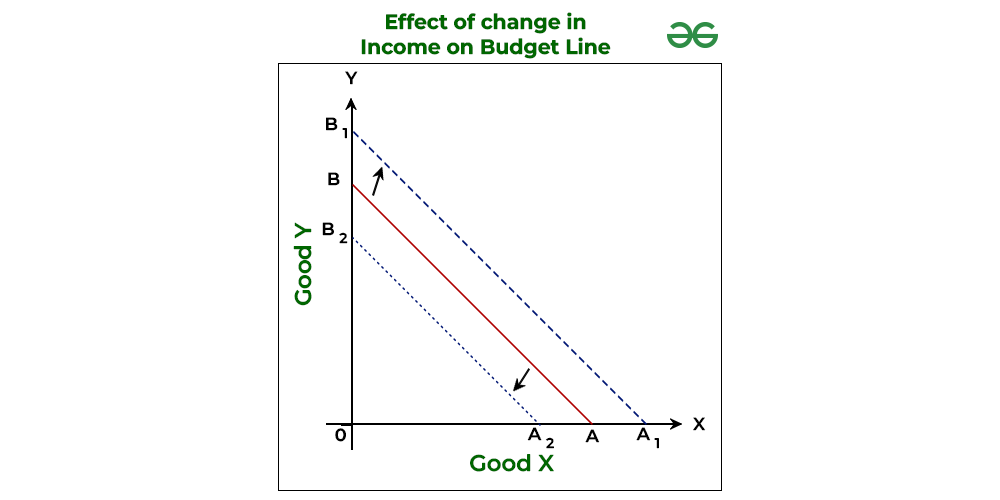While drawing a budget line, it is assumed that the income of the consumer and the price of the commodities is constant. Therefore, there will be a shift in the budget line when there is either a Change in the Income of the Consumer or a Change in the Price of the Commodity.
What is Budget Line?
The term budget line refers to a graphical representation of all the potential combinations of two commodities that can be bought within a certain income and price, and all of these combinations provide the same satisfaction level. It comes with the condition that the cost of each combination must be less than or equal to the consumer’s money income. Simply put, a budget line is the locus of various combinations of two goods a consumer consumes and whose cost is equal to his income. Other names for Budget Line are Price Line, Price Opportunity Line, Budget Constraint Line, or Price Income Line.
Shift in Budget Line
There is a shift in the budget line when there is a change in the income of the consumer or when there is a change in the prices of either one or both commodities.
1. Effect of a Change in the Income of Consumer:
While assuming that the price of Good X and Good Y in the above example remains constant, if there is a change in the income of the consumer, then the budget line will shift. When there is an increase in the income of the consumer, then he will be able to purchase more bundles of Good X and Good Y, which were not possible for him earlier. This will shift the budget line to the right from AB to A1B1. This new budget line will be parallel to the original budget line. Similarly, when there is a reduction in the income of the consumer, then the budget line will shift to the left from AB to A2B2.

2. Effect of Change in Prices of the Commodities:
There are three cases in which the price can change. These are as follows:
i) Change in Prices of both Commodities: When the price of both goods changes, then the budget line will shift. If the price of both goods falls then the Budget Line will shift right from AB to A1B1. However, if the price of both goods increases then the Budget Line will shift to the left from AB to A2B2.

ii) Change in the Price of Commodity on the X-axis (Good X): When the price of Good X falls, then the budget line will rotate to the right from, AB to A1B. It means that the new budget line will meet the Y-axis at the same point; i.e., B because the price of Good Y has not changed; however, it will touch the X-axis at point A1, because the consumer can now buy more units of Good X with his same income level. Similarly, if the price of Good X rises, then the budget line will rotate to the left from AB to A2B.

iii) Change in the Price of Commodity on the Y-axis (Good Y): When the price of Good Y falls, then the budget line will rotate to the right from, AB to AB1. It means that the new budget line will meet the X-axis at the same point; i.e., A because the price of Good X has not changed; however, it will touch the Y-axis at point B1, because the consumer can now buy more units of Good Y with his same income level. Similarly, if the price of Good Y rises, then the budget line will rotate to the left from AB to AB2.

Leave a Reply